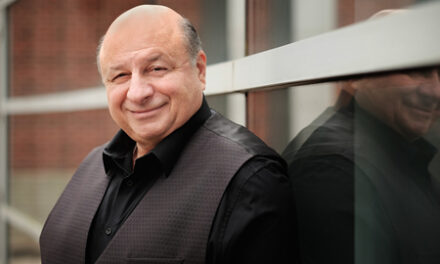In some cases, such as Franz Schubert’s “Unfinished” Symphony, the title tells you. Sometimes the legend of an artist’s work left incomplete at his death becomes part of popular culture, like the depiction of Mozart racing to finish his Requiem, dramatically and in part incorrectly portrayed in the film Amadeus. It takes a unique combination of scholarship, intimate knowledge of a composer’s style and method, compositional skill, and audacity to “finish” an incomplete work and then convince musicians and management to present the results to the public. Such a resurrection received its Southeastern U.S. premiere on April 9 at the Duke University Chapel as the Duke Chapel Choir and Chorale, directed by Rodney Wynkoop, presented Mozart’s Mass in c Minor as completed by Robert Levin.
Mozart wrote that he had completed “…the score of half of a Mass, which lies here, still in the best of hopes.” This was in early 1783, and despite its premiere in its incomplete form later that year, Mozart never revisited this magnificent work. Theories as to why are just that. Robert Levin, a Mozart scholar and pianist, made extensive revisions and additions to the Mass, almost doubling its performance time to 90 minutes. Using existing sketches and even some material from other works, Levin has created a cohesive and unified reconstruction that only the most persnickety musicologists would find offensive. Levin has added seven new movements to the authentic, original score, and he has accomplished a seamless weave that, to even the most knowledgeable, discerning ears, sounds like Mozart’s ideas and compositional style. This edition was commissioned by Carnegie Hall to commemorate the 250th anniversary of Mozart’s birth, so the “tampering” with this (literally and figuratively) sacred music has a certain stamp of approval, and judging by the almost immediate and universal acceptance of this remarkable transformation, the Levin edition of the “Great” Mass is a sure bet to become the standard performing edition.
The one-time performance at Duke Chapel was undertaken with a combined choir of approximately 150 voices and the Orchestra Pro Cantores, this time with a string section a bit larger than those that have accompanied most of Wynkoop’s previous concerts. The guest soloists were soprano Christina Major, mezzo-soprano Margaret Bragle, tenor Randall Outland, and bass Donald Milholin. The listing is in descending order of the amount of solo material each singer had – the basso actually did not have a solo but was part of a quartet with the three others in two sections at the very end of the Mass.
Having a first-class, front-row seat in Duke Chapel is the only way to fly. The awesome power generated by this powerful performance was at times overwhelming in both volume and emotion. This was one of the finest orchestral performances I have heard – never mind that this was basically a pick-up band of seasoned professionals and not a pre-formed ensemble. The only negative aspects of the choral performance during the entire afternoon were several raucous, strained entrances by the tenors in passages requiring loud, fugal lines. A bit of finesse and controlled volume would have greatly improved their blend with the others. With her extreme vibrato and Wagnerian pipes, soprano soloist Major seemed to be out of synch with the style, but her slower, more intimate solo in the “Et incarnatus est” section was breathtaking.
Mozart began this work during a time in his life when he was so deeply immersed in the study of Bach’s fugal writings that he wrote exercises in this style to help learn the secrets of the master of counterpoint. Most of the great contrapuntal showpieces in this Mass are contained within the choral sections; Mozart’s more “contemporary” style is reserved for the sections with soloists. It is this contrast, along with the deeply emotional tonality of c-minor (also a favorite of Beethoven’s for this purpose), that gives this work its capacity to engage the listener continually. The driving, rhythmically pulsating fugal choruses can lead to rhythmic train-wrecks, but Wynkoop kept the large forces under control and created excitement and emotion, not anarchy and chaos.
This was a magical, mystical performance that leaves many questions unanswered. Despite Levin’s remarkable completion, we must wonder why Mozart left such a promising gem unfinished for the eight years that remained prior to his death. What would he have thought of someone else taking up where he left off? Since it languished for eight years in its incomplete form, does this imply that is how Mozart meant it to remain? These are of course unanswerable musings….












